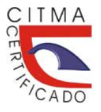Effect of temperature and light on seed germination of two legumes
Keywords:
Germination, Neonotonia wightii, Photoblastic, Teramnus labialisAbstract
The main route of propagation of forage legumes is through botanical seeds, so knowing the necessary requirements (temperature and light) during germination is essential to guarantee high germination percentages in the seeds of these species. The objective of this research is to determine the temperature and light requirements (photoperiods) necessary to achieve high germination percentages in the seeds of Teramnus labialis (L.f.) Spreng, cv. “Semilla Oscura” and Neonotonia wightii (Wight & Ann), cvs. “Tinaroo” and “Copper”. Eight constant temperatures (10, 15, 20, 25, 30, 35, 40 and 45ºC) and five different photoperiods (0/24, 6/18, 12/12, 18/6 and 24/0; light hours / darkness) was studies. T. labialis seeds showed their highest germination capacity between 25 and 35ºC, while N. wightii seeds were obtained between 20ºC and 30ºC. No germination was observed for T. labialis at 40ºC, while for N. wightii cultivars it ceased at 35ºC. The optimum germination temperature for T. labialis and N. wightii seeds were 30ºC and 25ºC respectively. The seeds of the two species can be classified as non-photoblastic because the light (photoperiod) did not affect the germination capacity.
Downloads
References
ACOSTA, Y. ... [et al.] (2020a). Perspectivas de Teramnus labialis (L.f.) Spreng para el desarrollo de sistemas agrícolas en Cuba. Revista de Producción Animal. Vol. 32, No. 3, pp. 79-87.
ACOSTA, Y. ... [et al.] (2020b). Dormancy breaking in Teramnus labialis (Lf) Spreng seeds through liquid nitrogen exposure is based on the modification of the hilar region, cuticle, and macrosclereid. Acta Physiologiae Plantarum. Vol. 42, No. 9, pp. 1-7. doi:10.1007/s11738-020-03134-9.
ACOSTA, Y. ... [et al.] (2020c). Cryo-exposure of Neonotonia wightii Wigth and Am seeds enhances field performance of plants. Acta Physiologiae Plantarum. Vol. 42, No. 1, pp. 1-6. doi: 10.1007/s11738-019-3010-y.
AZANI, N. ... [et al.] (2017). A new subfamily classification of the Leguminosae based on a taxonomically comprehensive phylogeny: The Legume Phylogeny Working Group. Taxon. Vol. 66, No. 1, pp. 44-77. doi: 10.12705/661.3.
BARROS, J. R. A. ... [et al.] (2020). Optimal temperature for germination and seedling development of cowpea seeds. Revista Colombiana de Ciencias Hortícolas. Vol. 14, No. 2, pp. 231-239. doi: 10.17584/rcch.2020v14i2.10339.
BASKIN, J. M., NAN, X. y BASKIN, C. C. (1998). A comparative study of seed dormancy and germination in an annual and a perennial species of Senna (Fabaceae). Seed Science Research. Vol. 8, No. 4, pp. 501-512. doi: 10.1017/S0960258500004475.
BUTLER, T. J. ... [et al.] (2014). Temperature Affects the Germination of Forage Legume Seeds. Crop Science. Vol. 54, No. 6, pp. 2846-2853. doi: 10.2135/cropsci2014.01.0063.
CAROCA, R., ZAPATA, N. y VARGAS, M. (2016). Efecto de la temperatura sobre la germinación de cuatro genotipos de maní (Arachis hypogaea L.). Chilean Journal of Agricultural & Animal Sciences. Vol. 32, No. 2, pp. 94-101. doi: 10.4067/S0719-38902016000200002.
CARRERA, G. ... [et al.] (2020). An updated overview on the regulation of seed germination. Plants. Vol. 9, No. 6,pp. 1-41. doi:10.3390/plants9060703.
DAMASCENO, M.L. ... [et al.] (2018). Influence of temperature and light on germination of weed species. Asian Academic Research Journal of Multidisciplinary. Vol. 5, No. 1, pp. 60-76.
DÍAZ, A. ... [et al.] (2012). Supplementation of yearlings Cuban charolais grazing multiple associations of herbaceous legumes and tropical grasses. Cuban Journal of Agricultural Science. Vol. 46, No. 3, pp. 249-252.
FONTES, D. ... [et al.] (2008). Selección de leguminosas herbáceas para el fomento de cobertura en plantaciones de naranja Valencia late. Pastos y Forrajes. Vol. 32, No. 1, pp. 1-11.
GHALEB, W. ... [et al.] (2021). The history of domestication and selection of lucerne: a new perspective from the genetic diversity for seed germination in response to temperature and scarification. Frontiers in plant science. Vol. 11, No. 1, pp. 1-11. doi: 10.3389/fpls.2020.578121.
ISTA. (2016). International rules for seed testing. I. S. T. Association. Bassersdorf, Suiza: 192 p.
LINDO, T., LA TORRE, M. I. y LUJÁN, D. Á. (2017). Efecto de la temperatura y el ácido giberélico en la germinación de semillas de Caesalpinia spinosa (Tara). The Biologist. Vol. 1, No. 2, pp. 59-64. doi: 10.24039/rtb2017151143.
MARINONI, L. D. R. ... [et al.] (2017). Efecto de la temperatura y salinidad en la germinación y crecimiento inicial de un material naturalizado de Lotus tenuis Waldst. & Kit. Revista FAVE - Ciencias Agrarias. Vol. 16, No. 2, pp. 47-59.
MARTÍNEZ, J. A. ... [et al.] (2018). Plant attributes and their relationship to the germination response to different temperatures of 18 species from central Mexico. Plant Biology. Vol. 20, No. 6, pp. 1042-1052. doi: 10.1111/plb.12882.
MAZORRA, C. A. ... [et al.] (2020). Viabilidad tecnológica y económica del sistema integrado Guayaba-Leguminosa-Ovino en Ciego de Ávila, Cuba. Revista de Producción Animal. Vol. 32, No. 1, pp. 84-99.
MENÉNDEZ, J. (1982). Teramnus Swartz. Pastos y forrajes. Vol. 5, No. 3, pp. 251-263.
NOBRE, J. P. ... [et al.] (2017). Germination and development of Amburana cearensis seedlings as influenced by seed weight, light and temperature. Acta Scientiarum. Agronomy. Vol. 39, No. 4, pp. 525-533. doi: 10.4025/actasciagron.v39i4.32786.
NOSRATTI, I. ... [et al.] (2018). Environmental factors affecting seed germination and seedling emergence of foxtail sophora (Sophora alopecuroides). Weed Science. Vol. 66, No. 1, pp. 71-77. doi: 10.1017/wsc.2017.35.
PARMOON, G. ... [et al.] (2015). Quantifying cardinal temperatures and thermal time required for germination of Silybum marianum seed. The Crop Journal. Vol. 3, No. 2, pp. 145-151.
PEARSON, T. R. H. ... [et al.] (2002). Germination ecology of neotropical pioneers: interacting effects of environmental conditions and seed size. Ecology. Vol. 83, No. 10, pp. 2798-2807.
REINO, J. ... [et al.] (2011). Combined effect of scarification and temperature on the germination of herbaceous legume seeds. Pastos y Forrajes. Vol. 34, No. 2, pp. 179-184.
SAMPAYO, S. ... [et al.] (2021). Thermal Niche for Seed Germination and Species Distribution Modelling of Swietenia macrophylla King (Mahogany) under Climate Change Scenarios. Plants. Vol. 10, No. 11, p. 2377.
SÁNCHEZ, J. A., MARTÍNEZ, J. y PERNÚS, M. (2017). Efecto de la temperatura y la iluminación sobre la germinación de semillas no dormantes de Guazuma ulmifolia (Malvaceae). Acta Botánica Cubana. Vol. 216, No. 2, pp. 55-60.
SÁNCHEZ, J. A. ... [et al.] (2019). Dormancia y germinación en semillas de árboles y arbustos de Cuba: implicaciones para la restauración ecológica. Acta Botánica Cubana. Vol. 218, No. 2, pp. 77-108.
SANTOS, L. D. T. ... [et al.] (2015). Phenotypic plasticity of Neonotonia wightii and Pueraria phaseoloidesgrown under different light intensities. Anais da Academia Brasileira de Ciências. Vol. 87, No. 1, pp. 519-528. doi: 10.1590/0001-3765201520140017.
YAN, A. y CHEN, Z. (2020). The control of seed dormancy and germination by temperature, light and nitrate. The Botanical Review. Vol. 86, No. 1, pp. 39-75.
Downloads
Published
Versions
- 2024-03-07 (2)
- 2023-05-25 (1)
How to Cite
Issue
Section
License
Copyright (c) 2023 Universidad & ciencia

This work is licensed under a Creative Commons Attribution-NonCommercial-ShareAlike 4.0 International License.





















